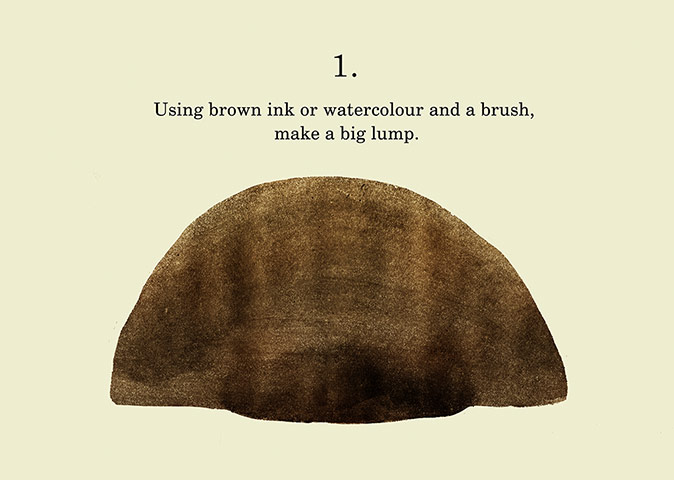 I love the Guardian's How to draw... series by children's book illustrators. Today it's Jon Klassen with "How to draw...a bear thinking about something." The finished bear will look familiar if you've seen Klassen's I Want My Hat Back (Candlewick, 2011); I was under the impression that the bear in that book was rendered digitally, but you can draw (or rather paint) your own with brown ink or watercolor. After the success of the Oliver Jeffers-inspired moose, I think we will try to paint some Klassen bears this weekend. What do bears think about?
I love the Guardian's How to draw... series by children's book illustrators. Today it's Jon Klassen with "How to draw...a bear thinking about something." The finished bear will look familiar if you've seen Klassen's I Want My Hat Back (Candlewick, 2011); I was under the impression that the bear in that book was rendered digitally, but you can draw (or rather paint) your own with brown ink or watercolor. After the success of the Oliver Jeffers-inspired moose, I think we will try to paint some Klassen bears this weekend. What do bears think about?
Tulip Mania, the Sequel: Snowdrops
I read this article in yesterday's Washington Post ("Letter from Ireland: Snowdrops are a prize in full bloom," by Adrian Higgins, 2/20/2013), about the mania for snowdrop bulbs in Ireland, with great interest, partly because who doesn't love snowdrops in February? But mostly because I'm also interested in reading about the seventeeth-century Dutch mania for tulips. Unfortunately, there don't seem to be many middle grade or YA books set during the Dutch Golden Age: just The House of Windjammer by V.A. Richardson (Bloomsbury, 2003) and its sequels, The Moneylender's Daughter and The Street of Knives, which seem to involve a lot of seafaring and anyway are out of print. Maybe there are more?
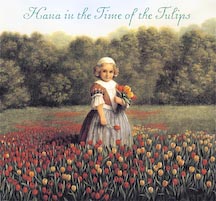 Picture book readers, though, might like Hana in the Time of the Tulips by Deborah Noyes, illustrated by Bagram Ibatoulline (Candlewick, 2004). Ibatoulline's illustrations echo the style of the Dutch masters, particularly Rembrandt, who appears as a character in this book. And Noyes's work is always interesting, whether she's writing about tulips or wolf girls or Chinese princesses. And those are just the picture books!
Picture book readers, though, might like Hana in the Time of the Tulips by Deborah Noyes, illustrated by Bagram Ibatoulline (Candlewick, 2004). Ibatoulline's illustrations echo the style of the Dutch masters, particularly Rembrandt, who appears as a character in this book. And Noyes's work is always interesting, whether she's writing about tulips or wolf girls or Chinese princesses. And those are just the picture books!
The Mystery of the Fool and the Vanisher
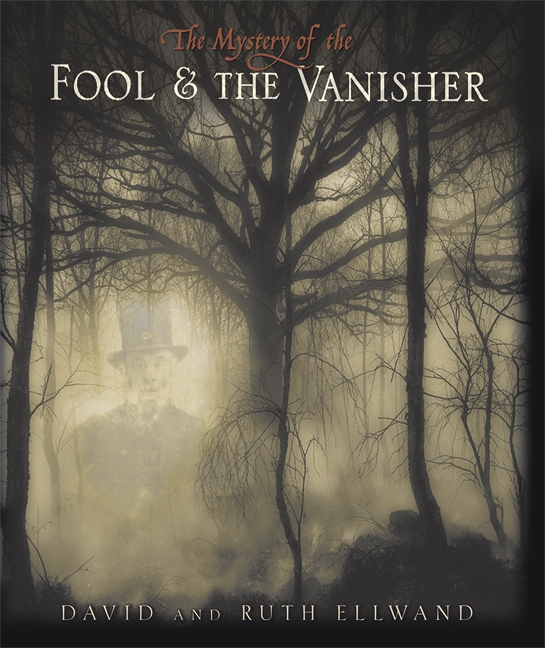 It's as difficult to pin down The Mystery of the Fool and the Vanisher by David and Ruth Ellwand (Candlewick, 2008) as one imagines it would be to photograph a fairy (Cottingley fairies aside). Which is precisely what nineteenth-century photographer Isaac Wilde attempted to do while on an archaeological dig of a Neolithic flint mine somewhere in the English Downs. Wilde's account, transcribed from wax phonograph sound recordings, is documented here alongside photographs of the contents of a wooden box discovered by David Ellwand while walking on the Downs (in the footsteps, incidentally, of none other than Sir Arthur Conan Doyle); and framed by Ellwand's personal journal with additional notes from his photographic notebook.
It's as difficult to pin down The Mystery of the Fool and the Vanisher by David and Ruth Ellwand (Candlewick, 2008) as one imagines it would be to photograph a fairy (Cottingley fairies aside). Which is precisely what nineteenth-century photographer Isaac Wilde attempted to do while on an archaeological dig of a Neolithic flint mine somewhere in the English Downs. Wilde's account, transcribed from wax phonograph sound recordings, is documented here alongside photographs of the contents of a wooden box discovered by David Ellwand while walking on the Downs (in the footsteps, incidentally, of none other than Sir Arthur Conan Doyle); and framed by Ellwand's personal journal with additional notes from his photographic notebook.
All of this fails to capture the creepy gorgeousness of The Mystery of the Fool and the Vanisher, recommended to me by Zoe of Playing by the Book (via Myra of Gathering Books; thanks to you both!) because of my interest in manipulated photography and photographic processes--many of which (bromide, gold-toned albumen, gelatin silver, etc.) are represented in this book. According to the copyright page, however, the photographs were made "with necromancy and magic." And I'm inclined to believe it.
[All the more so because the book's website has disappeared. How long ago was 2008 in Internet years? You'll just have to take my word for it, or track down a copy for yourself (it's currently available for a bargain price on Amazon). Apart from the photographs, the artifacts are fascinating: my favorite are the spectacles with the lenses removed and replaced with holed flint stones. Or the mussel shell suit of armor.]
Caldecott Hopefuls: This Moose Belongs to Me
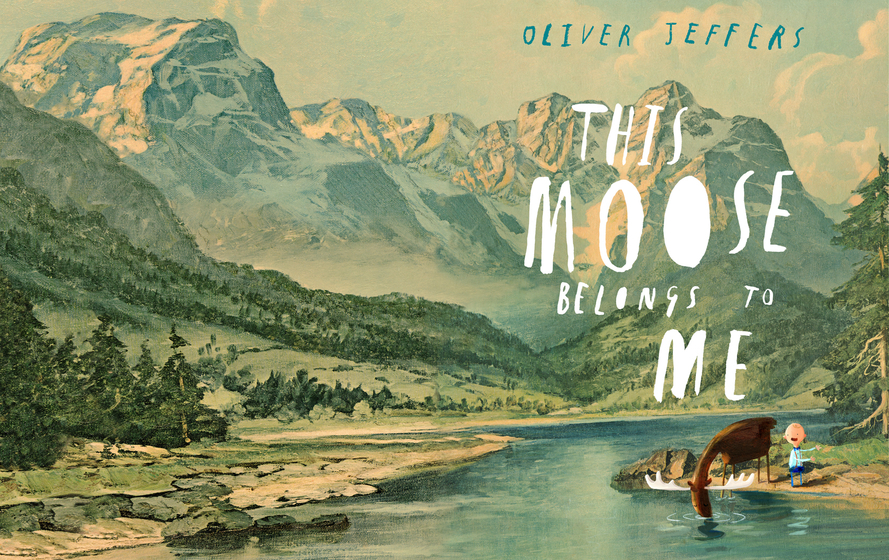
My Caldecott Hopefuls are picture books I like a lot, for various and idiosyncratic reasons, and not necessarily ones I think will win the award (although one can hope). Here's what I love about This Moose Belongs to Me by Oliver Jeffers (Philomel, 2012): the contrast between the grandeur and solemnity of the landscape backgrounds (many of them reprinted from paintings by 20th century American artist Alexander Dzigurski) and, well, Wilfred and his moose (as seen in the image above, which wraps around the covers of the book). Now that I think of it, this style of illustration--Jeffers's artistic borrowing--is especially appropriate to a story about ownership (see Caldecott criteria 1.c). Does this moose belong to me?
According to the copyright page, "the art for this book was made from a mishmash of oil painting onto old linotype and painted landscapes, and a bit of technical wizardry thrown into the mix here and there." In case you want to try this at home (yes, you do), Oliver Jeffers has helpfully made a video called How to Draw a Moose. We didn't have any landscape paintings lying around, so we drew our moose (meese? mice?) onto pages ripped from old National Geographics instead. Kind of like this:
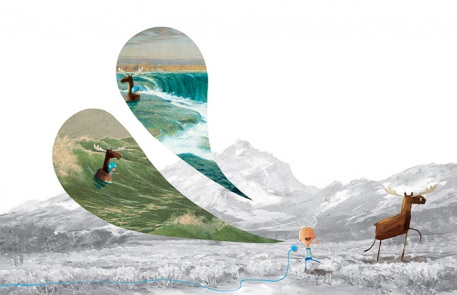
Except at Macchu Picchu.